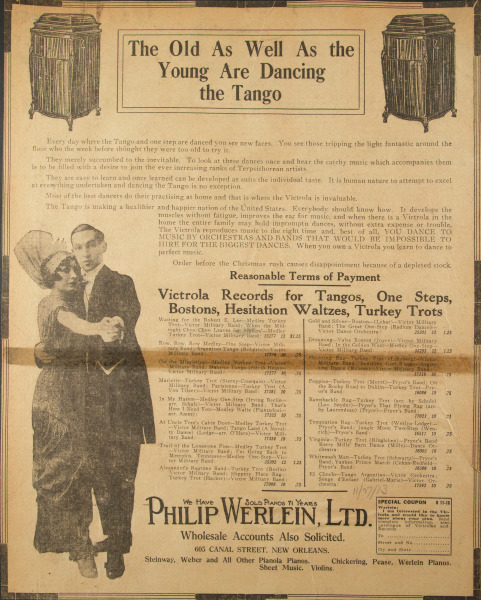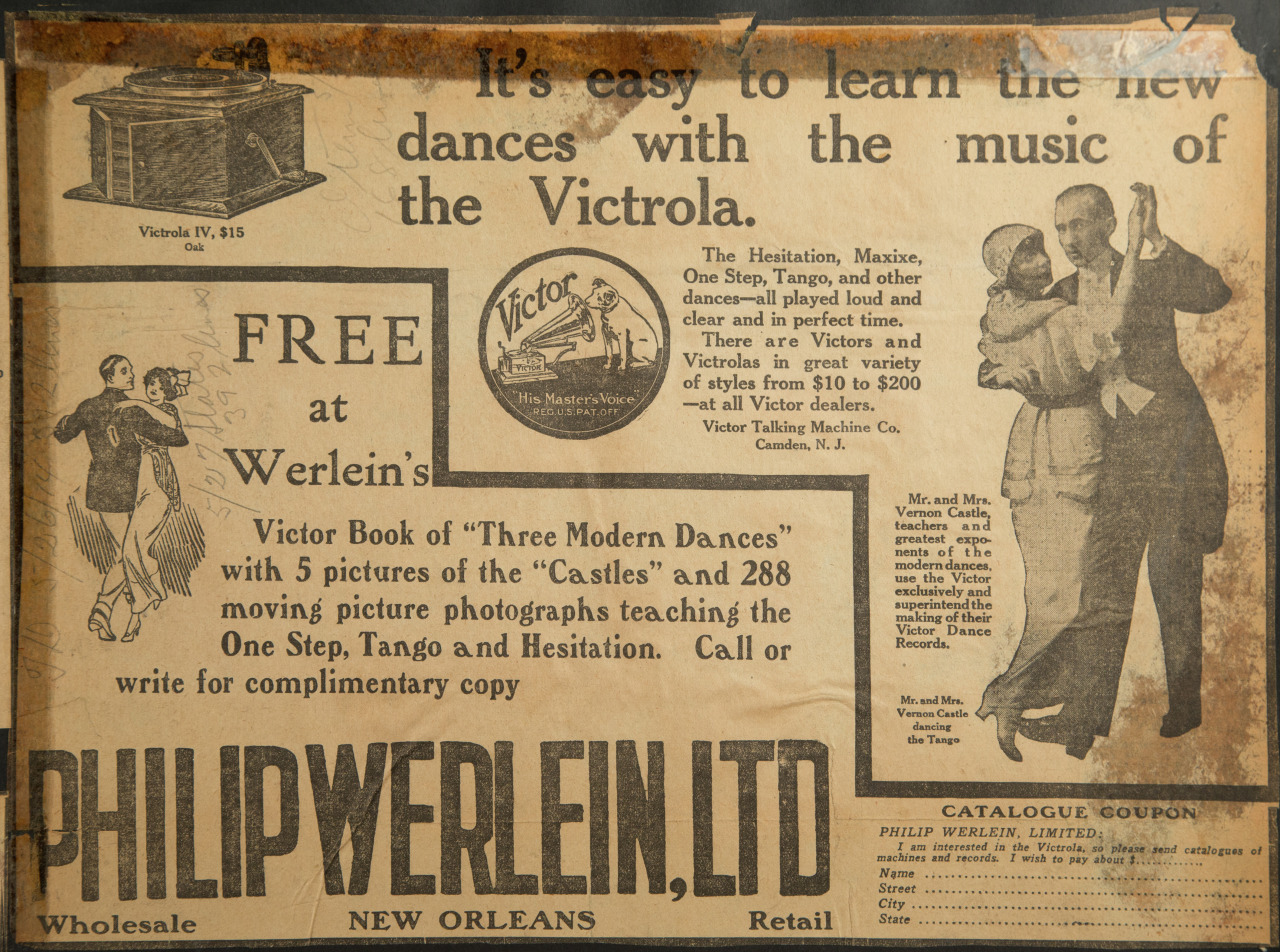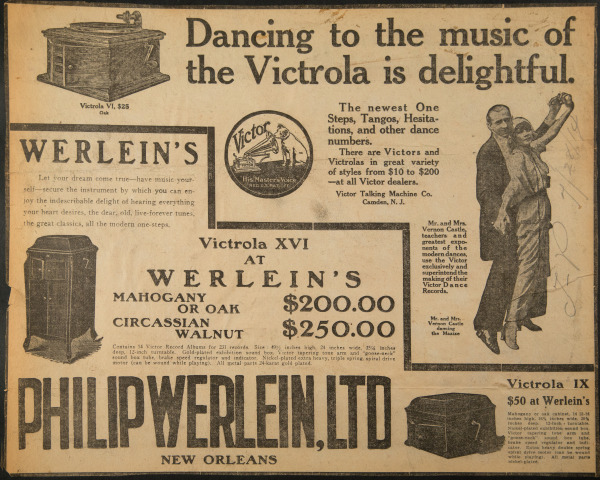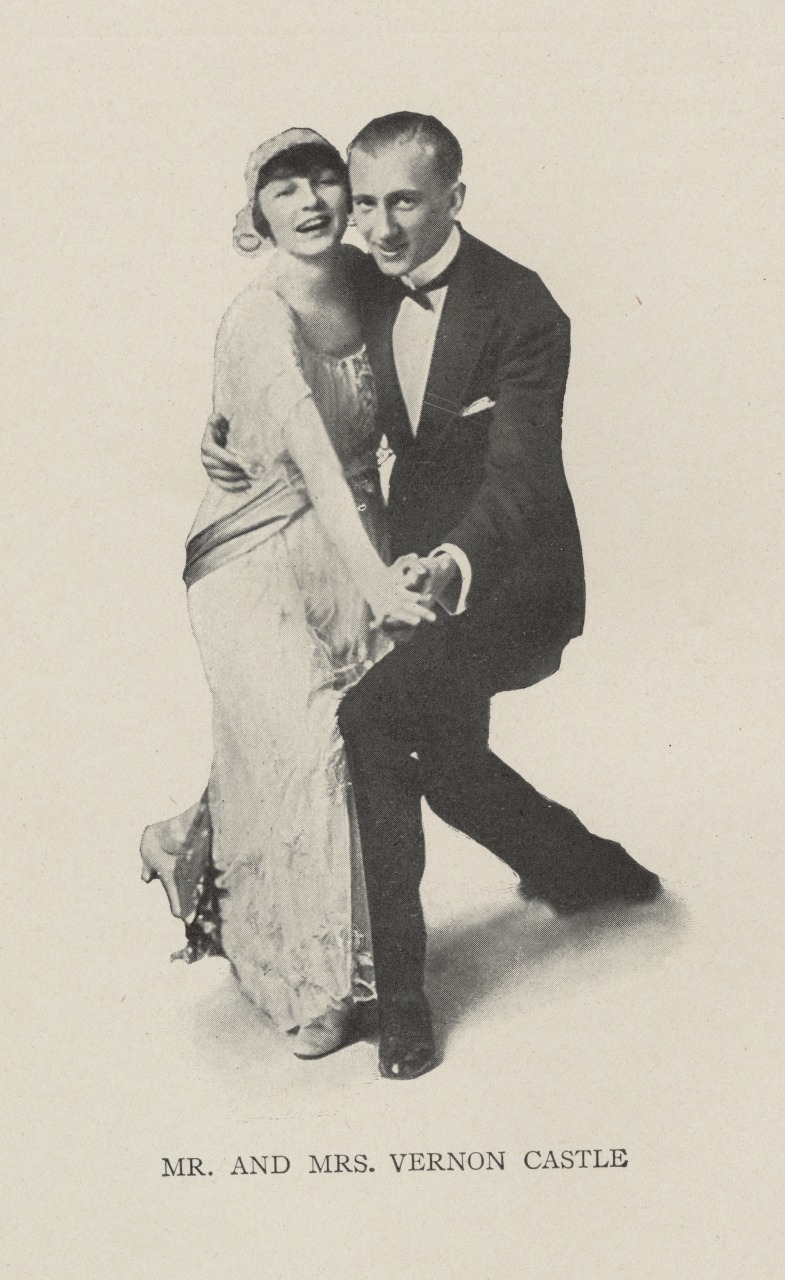The music performed in Storyville was almost uniformly designed to get people moving on the dance floor. The more traditional steps of the quadrille, waltz, and polka dominated the early years and high-end establishments, though many of the most successful bands and musicians also played newer styles to suit the desires of their audiences. Bolden’s band, for example, was known to start the evening playing polkas only and to end the night performing the more salacious and intimate slow drag, as the more liberally minded arrived. By the 1910s, new, easy-to-learn dance steps like the one-step and foxtrot took over, as a younger generation of dancers wanted easier steps that allowed for more personal variation.

Advertisement for Victrola dance records at Werlein’s
from Werlein’s scrapbook
November 27, 1913
The Historic New Orleans Collection, gift of Philip Werlein, Ltd., 2005.0154.2

Advertisement for Victrolas at Werlein’s
from Werlein’s scrapbook
May 26, 1914
The Historic New Orleans Collection, gift of Philip Werlein, Ltd., 2005.0154.2

Advertisement for Victrolas at Werlein’s
from Werlein’s scrapbook
July 28, 1914
The Historic New Orleans Collection, gift of Philip Werlein, Ltd., 2005.0154.2

Modern Dancing
by Vernon Castle and Irene Castle
New York: World Syndicate, 1914
The Historic New Orleans Collection, The William Russell Jazz Collection, acquisition made possible by the Clarisse Claiborne Grima Fund, MSS 525, 92-48-L.62.268Modern Dancing, the dance manual released in 1914 by the dancing duo Vernon and Irene Castle, gained national popularity as a source for learning the newest steps and styles.

Modern Dancing
by Vernon Castle and Irene Castle
New York: World Syndicate, 1914
The Historic New Orleans Collection, The William Russell Jazz Collection, acquisition made possible by the Clarisse Claiborne Grima Fund, MSS 525, 92-48-L.62.268

Modern Dancing
by Vernon Castle and Irene Castle
New York: World Syndicate, 1914
The Historic New Orleans Collection, The William Russell Jazz Collection, acquisition made possible by the Clarisse Claiborne Grima Fund, MSS 525, 92-48-L.62.268
